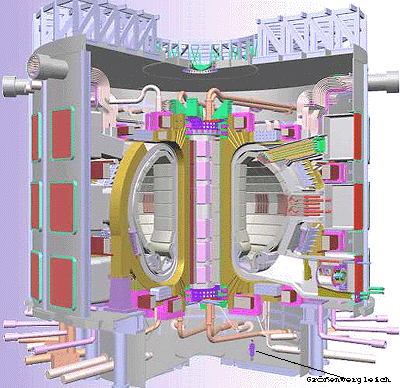
Fusion: Update on the International ITER Project – Event Review
Podcast: Play in new window | Download
Subscribe: Apple Podcasts | RSS
According to Brig. General Stephen Cheney, CEO of the American Security Project, “The science is proven, the engineering is not.”
That is how Wednesday, January 29, 2014’s ASP hosted event “Fusion: Update on the International ITER Project” was introduced. ITER is an international fusion research and engineering project which combines the resources and intellect of China, Japan, South Korea, Russia, United States, and the European Union. Fusion is the process that powers the Sun and allows for all life to exist. Scientists are currently seeking to harvest this incredible power according to the presentation by Dr. Ned Sauthoff.
Dr. Sauthoff, US ITER Project Director, gave an overview of the process of nuclear fusion and the history of man’s quest to exploit nuclear physics. He also detailed ITER’s origin, fabrication in ITER member countries and construction in Cadarache, France.
He began the presentation with the sun, the source of inspiration for nuclear fusion. The sun is rich with hydrogen the fuel for fission. It has a very high temperature, which is necessary for fusion to overcome natural repelling forces between positively charged nuclei. The sun also has a very strong gravitational field, which prevents the matter and reactants from escaping and allows for the energy produced from one reaction to keep the sun hot. It is this last aspect, confining the products and preventing energy from radiating away as waste, which has perplexed scientists attempting to create a “sun” on Earth. ITER hopes to solve this problem through a tokamak, a device which creates a super strong magnetic field, replicating how matter is restrained by the sun’s gravity.
Magnetic confinement fusion has not yet reached breakeven point (that is, producing as much fusion power as injected to keep the plasma hot). Fusion would have exceeded the breakeven point already, according to Dr. Sauthoff, if not for the lack of funding during the 1990s to build the next generation fusion device.
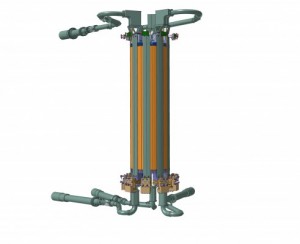
The Central Solenoid, the machinery which creates magnetic field. Photo courtesy of http://www.iter.org
When fully developed, ITER expects to create 500 megawatts of power from fusion energy, ten times the amount of the 50 megawatts needed to heat the plasma.
Dr. Sauthoff emphasized that fusion is a clean power source and does not produce high-level radioactive waste nor can a fusion reactor “meltdown,” two of the biggest drawbacks often associated with nuclear fission power. In addition, it requires relatively little sources of fuel: “Whereas you have a hundred coal train cars pull up to a power plant every day, with fusion, you would need only two pounds of fuel to create the same amount of energy.”
The United States’ two biggest contributions to the ITER project are the Central Solenoid, a gigantic pulsed magnet that will control the plasma in the reactor, and the Cooling Water System which will exhaust the power. Additionally, the United States is contributing to the diagnostics system, because the US is a leader in controlling, measuring, and researching plasma, as well as other critical ITER systems.
Diplomatic representatives in attendance from the EU, Japan, China, India, and France expressed their country’s continued commitment and dedication to the project.
Audio, video, and pictures from the event are all available below.
Click below to listen:

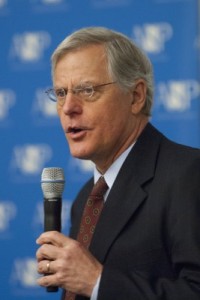
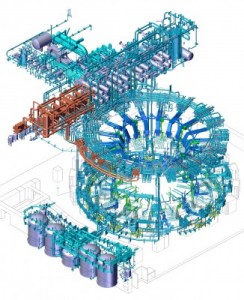
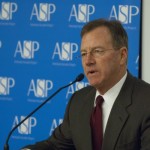
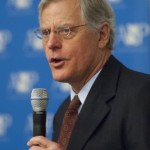
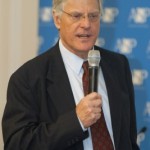
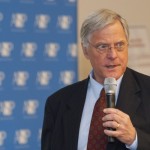
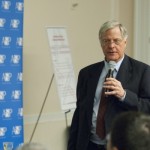
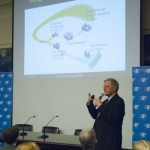
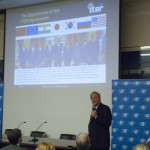

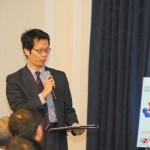
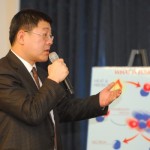
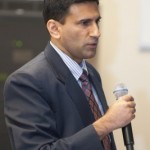
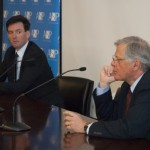
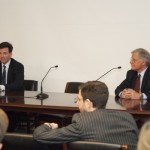






[…] Fusion: Update on the International ITER Project – Event Review William Fassuliotis […]
is there any progress in developing a program for the power plant of this project.what is the schedule for the core reactor to the site